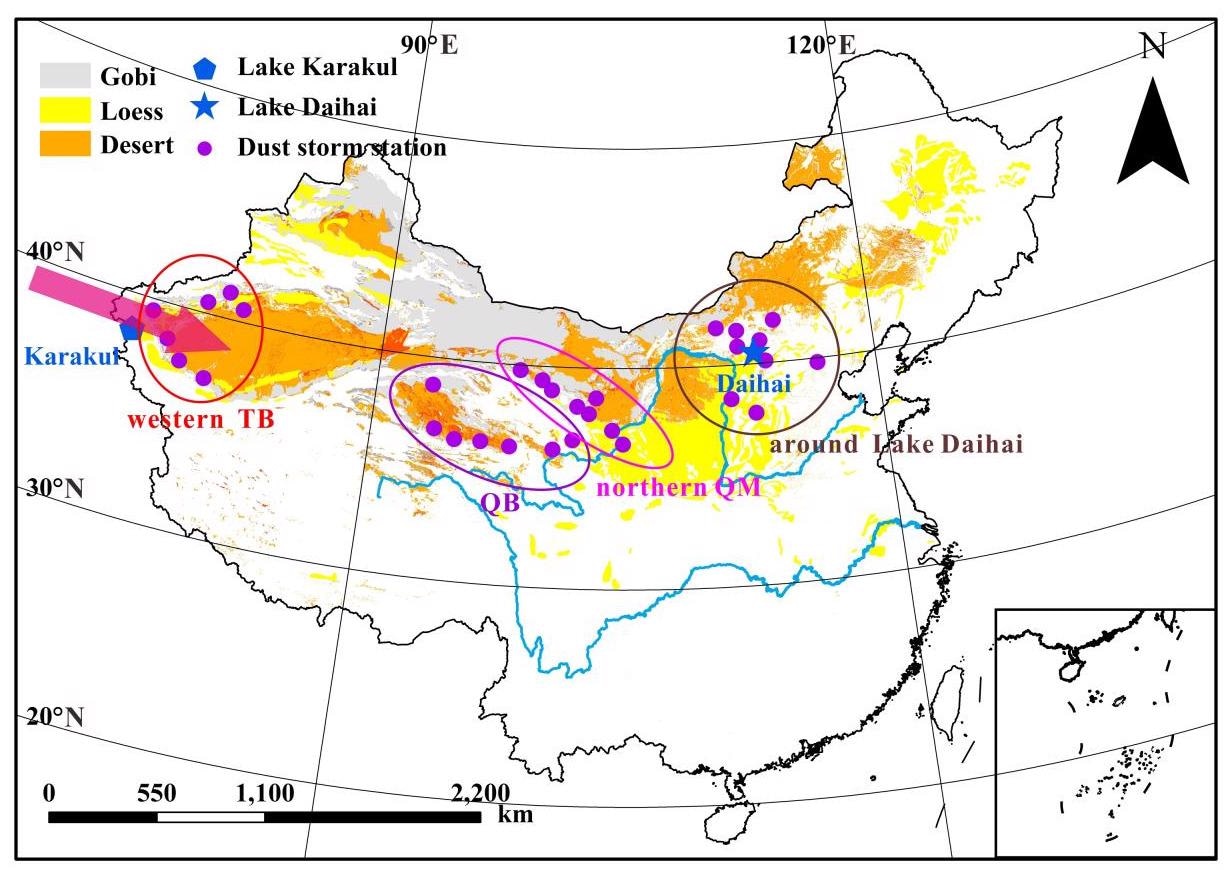May 27 2021
Dust storms are generally defined as disastrous weather events in which huge amounts of dust particles are lifted and transported by powerful winds. Such storms are characterized by suddenness, weak horizontal visibility (less than 1 km), brief duration, and extreme destruction.

Image Credit: © Science China Press.
In the last few years, the dust storms witnessed in northern China demonstrated generally reducing trends, as depicted in the above image, and this could have slowly made the dust storms “out of sight” of the general public.
But a powerful dust storm event, which recently originated from Mongolia in mid-March 2021, majorly impacted many regions in northern China, and thus revived the major concerns about the occurrences of dust storms and the causes behind them.
The occurrence of dust storms is usually a function of human activity and natural climatic factors (such as surface wind speed, precipitation and temperature), but it is still not clear which one is the dominating factor that controls the frequency, extent and magnitude of dust storms. The existing instrumental records are too brief to answer these questions.
Dust storms recorded in the natural geological archives can expand the eolian dust records further than the restricted temporal range of meteorological observations, and therefore can be utilized to rebuild the history of long-term dust storms.
Geological records obtained from natural archives, such as ice core and lake sediment records, also support the concept that dust storms were closely associated with both human activity (Neff et al., 2008 and Chen et al., 2020) and climatic factors (Wang et al., 2006 and Chen et al., 2013). But it is still a mystery whether and when human activities had exceeded natural climatic factors.
One such example is the latest study performed by Chen and team (2020) where authors debated that at least 2000 years ago, human activity could have surpassed the natural climatic changes to manage the dust storm events in eastern China. Hence, long-term and reliable dust storm records are required to investigate these problems.
Scientists from Tianjin University and their collaborators have recently rebuilt a history of dust storms based on well-documented lake sediment grain-size records in northern China, called Lake Daihai (Zhang et al., 2021) and Lake Karakul (Zhang et al., 2020).
The researchers observed that in northern China, the sedimentary sandy fraction (>63 μm) was a strong indicator of the previous dust storms, and the reconstructed dust storms corresponded well with those recorded in historical literatures, contemporary observation, and other strong geological archives.
Generally, the reconstructed dust storms took place at the time of cold intervals on decadal/annual scales over the past many centuries, and these dusty-cold patterns can also be seen in geological archives on much longer timescales—for example, the dust fluxes in Antarctica ice cores (Lambert et al., 2008), marine sediments (Rea, 1994), and central China loess (Sun and An, 2005) were significantly higher during the glacial stage than the interglacial one.
Professor Hai Xu and collaborators argued that those observed dust storm patterns were most probably caused by variations in the intensities of the Siberian High and the westerly modulated temperature changes.
One prominent feature in the reconstructions is the significantly intensified dust storm activities after around 1870 AD, more or less coinciding with the start of the Industrial Revolution. The increased dust particle supply caused by substantially intensified human activities may account for this sudden rise in dust storm events.
Another fascinating aspect is that while these dust storms have been methodically stimulated during the recent warming in this century, an evidently reducing trend can be observed within this interval. According to the authors, the declining trend was most probably caused by the reduction in mean wind speed in response to the latest global warming.
In contrast to the natural solar forced warming, the greenhouse gas-triggered warming may lead to a decrease in global zonal temperature gradient and then a general increase in atmospheric static stability, which is potentially conducive to decreasing global wind speed and dust storm frequency/intensity.
Hai Xu, Professor, Tianjin University
Due to the causal association between the decreasing wind speed and the recent warming, Professor Hai Xu and his collaborators inferred that, “dust storm activity in northern China is expected to further weaken or remain at its present low level in the near future.”
Journal Reference:
Zhang, S., et al. (2021) Dust storms in northern China during the last 500 years. Science China Earth Sciences. doi.org/10.1007/s11430-020-9730-2.